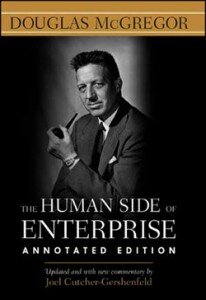Chart Cup And Handle
Contents

It also tells you where to expect the initial resistance level. This resistance happens at the level where the price reached and started falling. The price may drop slightly, then rally back up, forming another handle or breaking above the initial handle. There is also an upside-down cup and handle pattern, called the inverted or reverse cup and handle. This is a bearish pattern and it looks different to the traditional cup and handle.

The daily and weekly charts at both Investors.com and MarketSmith make heavy turnover easy to spot. Simply compare the day or week’s volume with the moving average line drawn across the volume bars. An Investors.com chart will also tell you in real time how volume is running in comparison with typical level at that time of the trading session. Whatever the height of the cup is, add it to the breakout point of the handle. For example, if the cup forms between $100 and $99 and the breakout point is $100, the target is $101.
A scams and handle is a technical chart pattern that resembles a cup and handle where the cup is in the shape of a “u” and the handle has a slight downward drift. The cup and handle is one of the easiest chart patterns to identify, because we all can recognize a cup. Some of us may not be rocket scientists; however, everyone I know has used a cup in their lifetime. It’s important to remember to look at the chart pattern over a longer-term time frame, such as daily, weekly, and monthly charts, in order to identify the pattern correctly. Additionally, when you identify the pattern, you should wait for the handle to form completely before entering a trade.
Get your daily dose of crypto and trading info
To determine the cup and handle, follow price movements on a chart and look for the “u” shape and the downward handle. Some rules will help you find a valid Cup and Handle pattern relating to its length, depth, and the underlying asset’s liquidity. An inverted “cup and handle” is used to identify selling opportunities, which is a sign of an upcoming bearish movement.

Cup and handle patterns seen in bear markets are generally not as reliable. As a general rule, cup and handle patterns are bullish price formations. The founder of the term, William O’Neil, identified four primary stages of this technical trading pattern. First, approximately one to three months before the “cup” pattern begins, a security will reach a new high in an uptrend. Second, the security will retrace, dropping no more than 50% of the previous high creating a rounding bottom.
A cup and handle is a chart pattern made by an asset’s price indicative of a future uptrend. Learn how to trade this pattern to improve your odds of making profitable trades. A price forms this pattern as a retest of the previous high, causing selling pressure from traders who bought an asset near it. However, the decline doesn’t happen as a straight dump but looks more like a “flag”, meaning buyers remain interested in the asset despite its high value. After breaking above the resistance, the price skyrockets to new highs pushed by the overall bullish sentiment. One common mistake that traders make when trying to trade the cup and handle pattern is buying too early before the handle has formed.
Timeframes
You could also use the larger height for an aggressive target. By having the handle and stop-loss in the upper third of the cup, the stop-loss stays closer to the entry point, which helps improve the risk-reward ratio of the trade. The stop-loss represents the risk portion of the trade, while the target represents the reward portion.
- Also, when the stock is breaking out, you should generally see a rush in turnover.
- Opponents of the V-bottom argue that prices don’t stabilize before bottoming and believe the price may drop back to test that level.
- The main reason for this is that bear markets are characterized by high levels of fear and uncertainty and investors tend to sell on any break-outs or rallies.
- There is also an upside-down cup and handle pattern, called the inverted or reverse cup and handle.
The cup can be spread out from 1 to 6 months, occasionally longer. The perfect pattern would have equal highs on both sides of the cup, but this is not always the case. If you’re day trading, and the target is not reached by the end of the day, close the position before the market closes for the day. If the price oscillated up and down several times within the handle, a stop-loss might also be placed below the most recent swing low. This pattern can occur both in small time frames, like a one-minute chart, as well as in larger time frames, like daily, weekly, and monthly charts. A doji is a trading session where a security’s open and close prices are virtually equal.
What is the Cup and Handle Pattern?
The pattern completes when the price breaks out from the handle’s trading range to signal the continuation of the previous rally. Thus, the cup and handle pattern is seen as a bullish continuation pattern. When the price breaks above the trading range that forms the handle of the pattern, it is expected to also break above the resistance of the swing high of the cup and make a huge advance. When trading the pattern, it may be better to wait until the price breaks above the cup’s swing high. The cup should be more U-shaped than V-shaped, as a gentle pullback from the high is more indicative of consolidation than a sharp reversal. The U-shape also demonstrates that there is strong support at the base of the cup and the cup depth should retrace less than 1/3 of the advance prior to the consolidation pullback.
This includes drawing trendlines for the handles to highlight the breakout points, notes to mark important areas, or arrows to highlight potential entry and exit points. We also offer a chart scanner with pattern recognition software that works automatically to detect and highlight trends for your ease of trading. SQQQ price closing on 50.24 USD where on the breakout of resistance level 48.68 USD yesterday. The price will likely continue in that direction though conservative traders may look for additional confirmation. The target can be estimated using the technique of measuring the distance from the right peak of the cup to the bottom of the cup and extending it in the direction of the breakout.
William O’Neil’s CANSLIM method shows better perhttps://business-oppurtunities.com/ance than the overall market (S&P 500) in backtests, even though it has lagged in recent years. Although we might argue O’Neil is the innovator of the cup and handle strategy, it’s just one part of many in his methodology. We can’t conclude on the profitability of the cup and handle strategy based on the CANSLIM method.
The inverted “cup and handle” is the opposite of the regular cup and handle. Instead of a “u” shape, it forms an “n” shape with the ascending handle. However, trading approaches used for inverted “cup and handle” are the same. An “inverted cup and handle” is a bearish pattern, triggering a sell signal.

Any research provided does not have regard to the specific investment objectives, financial situation and needs of any specific person who may receive it. It has not been prepared in accordance with legal requirements designed to promote the independence of investment research and as such is considered to be a marketing communication. Although we are not specifically constrained from dealing ahead of our recommendations we do not seek to take advantage of them before they are provided to our clients.
From this point forward, the bias begins to tilt gradually higher. During this phase the stock may be the subject of positive Wall Street analyst comments, a new product announcement or legal victory. As the rally gains steam sentiment improves dramatically and new buyers begin to talk about certain new highs but those that purchased the stock at or near top#1 get ready to sell.
Further, the pattern tells you not to worry when the price reaches at the resistance and either consolidates or starts retreating. If a Cup and Handle forms and is confirmed, the price should increase sharply in short- or medium-term. The price target following the breakout can be estimated by measuring the distance from the right top of the cup to the bottom of the cup and adding that number to the buy point. What should you do if volume on breakout day is much lighter than usual? Light volume in the market in general may also be a factor.
When the pattern is complete, a long trade could be taken when the price breaks above the handle. However, some traders make the mistake of assuming that once a U-shape forms, the price will drop to form a handle. It may not, so you should ideally avoid trading the pattern until it has fully formed, in order to confirm the trend.
Bulls then start coming in and take the price to the previous high.Bears come in again and push the price lower. Spread bets and CFDs are complex instruments and come with a high risk of losing money rapidly due to leverage. 78% of retail investor accounts lose money when spread betting and/or trading CFDs with this provider. You should consider whether you understand how spread bets and CFDs work and whether you can afford to take the high risk of losing your money. I accept FBS Agreement conditions and Privacy policy and accept all risks inherent with trading operations on the world financial markets. Cup and handle patterns work on all types of stocks, however, if you want to look for only the highestCANSLIMquality growth stocks, you can easily find them with preset filters onDeepvue.


